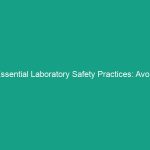Introduction
Good morning team,
Today, we are going to discuss an essential topic that affects all of us—the disposal of hazardous materials. Proper disposal is not just a regulatory requirement; it’s crucial for maintaining a safe workplace and protecting our Environment.
Understanding how to dispose of hazardous materials correctly ensures that we minimize risks to our health and Safety, as well as the well-being of our community. It’s important to know that improper disposal can lead to serious consequences, including health Hazards and legal repercussions.
Understanding Hazardous Material Disposal
Hazardous material disposal refers to the safe and compliant process of discarding substances that can pose a significant risk to health, safety, or the environment. These can include chemicals, batteries, electronic waste, and other materials classified as hazardous by regulatory agencies.
It’s vital to recognize that hazardous materials can impact our daily operations, from the products we use to the waste we generate. Many employees may be unaware of what qualifies as hazardous material, leading to potential risks if not managed properly.
Common misconceptions include thinking that all waste from our operations is non-hazardous or that it can be disposed of in regular trash. In reality, many items require special handling and disposal methods to prevent accidents and environmental damage.
Key Hazards, Risks, and Safety Considerations
When dealing with hazardous materials, several specific hazards and risks need to be acknowledged:
- Chemical Burns: Exposure to corrosive substances can lead to severe skin and respiratory injuries.
- Environmental Contamination: Improper disposal can result in soil and water contamination, harming local ecosystems.
- Legal Consequences: Failing to comply with hazardous waste Regulations can lead to hefty fines and legal action.
Ignoring these safety protocols can have real-world consequences, such as accidents, legal penalties, and even loss of life. We must recognize the importance of adhering to safety practices to protect ourselves and the environment.
Best Practices, Procedures, & Actionable Advice
To ensure the safe disposal of hazardous materials, follow these step-by-step Procedures:
1. Identify Hazardous Materials
Conduct a thorough inventory of materials used in your work area. Consult Safety Data Sheets (SDS) to determine which materials are hazardous.
2. Proper Segregation
Do not mix hazardous materials with regular waste. Keep them in designated containers that are clearly labeled to avoid confusion.
3. Storage Guidelines
Store hazardous materials in proper containers, away from heat sources, and in well-ventilated areas. Ensure that these containers are regularly inspected for leaks or damage.
4. Use Protective Equipment
Always wear appropriate Personal Protective Equipment (PPE) when handling hazardous materials. This includes gloves, goggles, and respiratory protection as needed.
5. Disposal Methods
Follow local regulations for disposal. Common methods include:
- Recycling: Some hazardous materials can be recycled safely.
- Incineration: Burning hazardous waste at high temperatures can reduce its volume and toxicity.
- Landfill: Only specific hazardous waste is permitted in designated landfills, and appropriate permits must be obtained.
Let’s learn from past incidents. For example, a construction site improperly disposed of paint thinners by pouring them down a drain, leading to extensive fines and contamination cleanup. Always prioritize safe disposal methods.
Regulations, Standards, and Compliance
Compliance with relevant regulations is critical. Major Standards include:
- OSHA Regulations: The Occupational Safety and Health Administration mandates proper handling and disposal practices.
- RCRA: The Resource Conservation and Recovery Act governs hazardous waste management in the U.S.
- EPA Guidelines: The Environmental Protection Agency provides resources and regulations for hazardous waste disposal.
Understanding and complying with these regulations not only protects employees but also ensures that our organization operates within the law. Non-compliance can lead to serious penalties, including fines and legal actions.
Employee Engagement & Discussion
Now that we’ve discussed these important practices, let’s open the floor for discussion. Here are some questions to consider:
- What safety challenges have you encountered related to hazardous material disposal?
- Do you feel you have the necessary Training to handle hazardous materials safely?
- What improvements can we make to our current disposal processes?
Your input is valuable in enhancing our safety practices. Let’s work together to foster a culture of safety and compliance.
Conclusion & Key Takeaways
In summary, proper disposal of hazardous materials is crucial for maintaining a safe workplace and protecting our environment. Key points to remember include:
- Identify and segregate hazardous materials correctly.
- Follow proper storage and handling procedures.
- Adhere to regulations to ensure compliance and safety.
Let’s commit to applying these practices in our daily operations. Thank you for your attention and for prioritizing safety in everything we do. Together, we can create a safer workplace for everyone.


